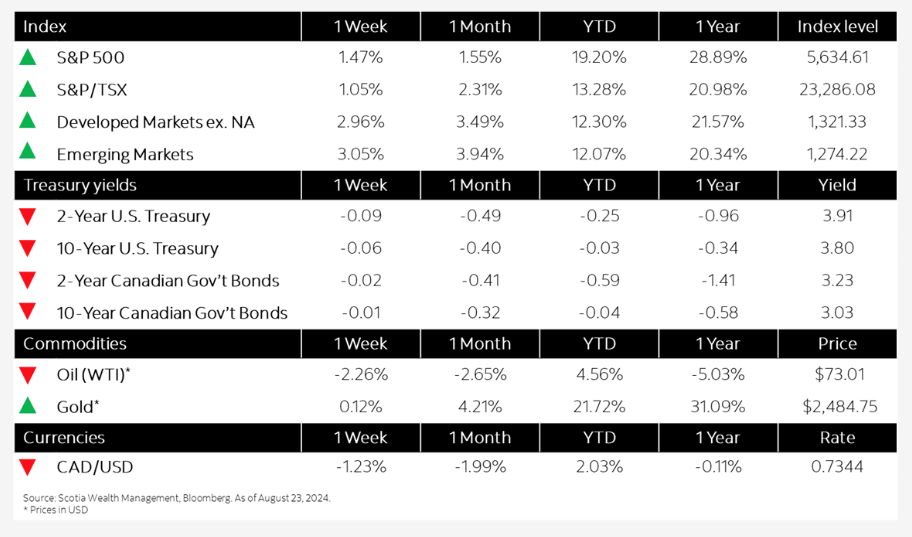
Market Watch: August 23
This week’s highlights
- Equity markets close out another strong week
- Bonds rally following Powell comments at Jackson Hole
- Canada’s inflation rate drops to slowest pace in three years
- U.S. nonfarm payrolls revised lower
- China maintains key loan rates amid signs of economic recovery.
- In the news: First-of-its-kind Canadian rail strike affects key supply chains
Week in review
Equity markets close out another strong week



